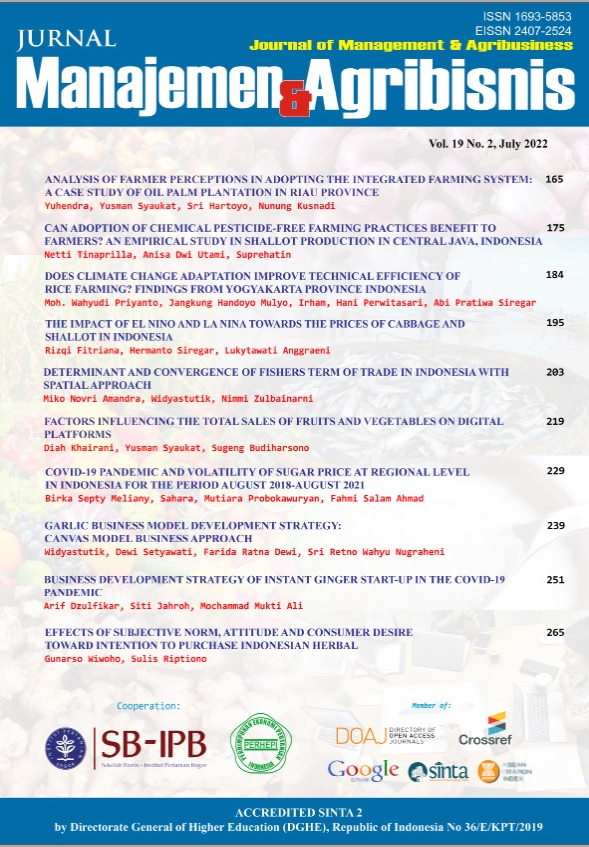Determinant and Convergence of Fishers Term of Trade in Indonesia With Spatial Approach
Abstract
This study aims to analyze the determinants and convergence of the Fishers Term of Trade (FiTT) and analyze government policies supporting increasing FiTT in Indonesia. The analysis used is the global moran index, dynamic spatial panel data regression, and descriptive analysis. The analysis results show spatial dependencies of FiTT with a clustered pattern. Provinces in quadrants III and IV in quadrant analysis indicate the need to evaluate government assistance policies. The determinants of FiTT in the short and long term are the CPI, government assistance, production value, and labor in the capture fisheries sub-sector. There is a convergence of provincial FiTT with a relatively high speed of 152 percent per year, assuming no significant external shocks exist. The time required to close half of the FiTT is 0,46 years. Policies can be carried out by encouraging programs to increase production, exports, and consumption of capture fisheries. They were maximizing the functions of the Central Information Control Team (CICT) and Local Information Control Team (LICT) in controlling the inflation of consumer goods in rural areas and maintaining the policy of subsidized fuel for small-scale fisheries. Maintain fish price stability at the fisherman's level by strengthening the National Fish Logistic System (NFLS), accelerating the implementation of the Warehouse Receipt System (WRS) for fishery commodities, and improving infrastructure that supports cold storage development, especially electricity availability. In addition, expanding the scope of the business area of PT Perikanan Indonesia and increasing its role as a logistics agency for fisheries.
Keywords: convergence, fishermen, FiTT, spatial, welfare
Authors
Authors who publish with this journal agree to the following terms:
- Authors retain copyright and grant the journal right of first publication with the work simultaneously licensed under a Creative Commons Attribution License that allows others to share the work with an acknowledgement of the work's authorship and initial publication in this journal.
- Authors are able to enter into separate, additional contractual arrangements for the non-exclusive distribution of the journal's published version of the work (e.g., post it to an institutional repository or publish it in a book), with an acknowledgement of its initial publication in this journal.
- Authors are permitted and encouraged to post their work online (e.g., in institutional repositories or on their website) prior to and during the submission process, as it can lead to productive exchanges, as well as earlier and greater citation of published work (See The Effect of Open Access).

